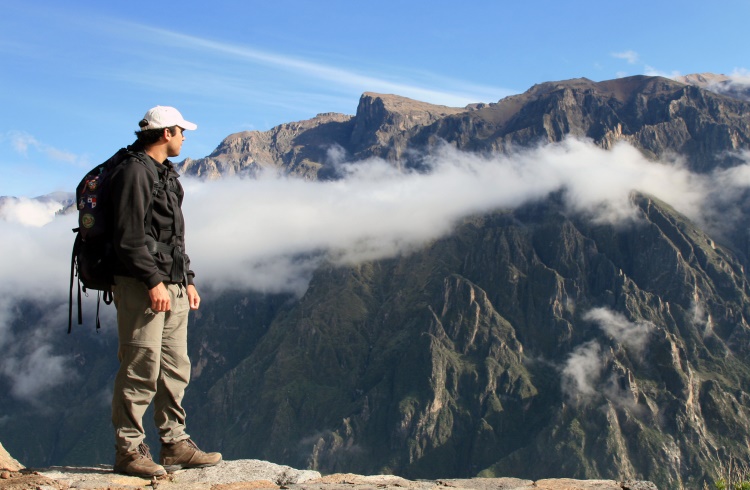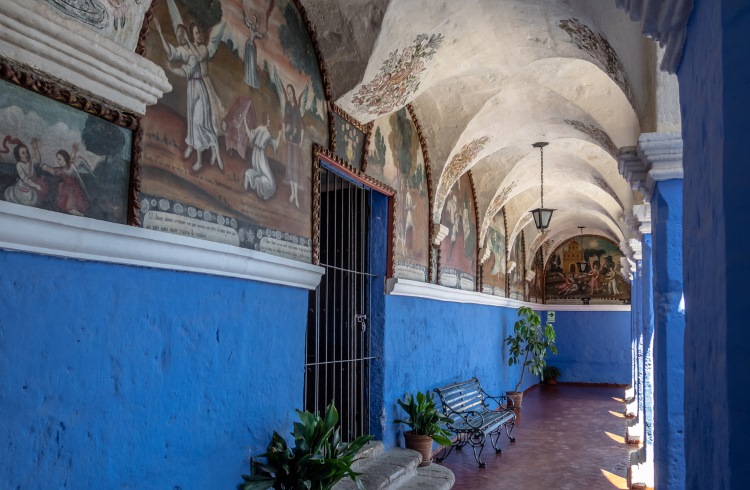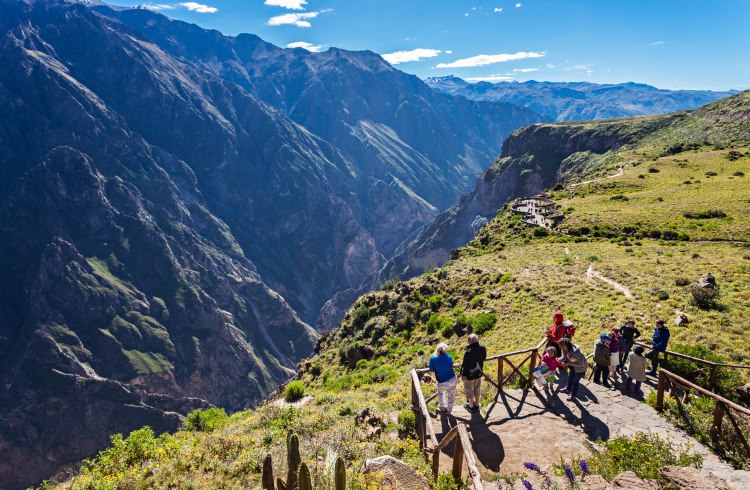Culture and Adventure in Arequipa and the Canyons
Whether you’re a foodie, a thrill seeker, or a culture hound, our insider Caroline steers you to the best of Peru's Southern Sierra.
 Photo © iStock/Onfokus
Photo © iStock/Onfokus
The Colca Valley is where Peru’s diversity of landscapes really puts on a show – a mosaic of snowcapped peaks, terraced slopes, desolate steppe, and parched desert.
Arequipa
Standing at 7,710ft (2,350m) and circled by three snow-covered volcanoes, Peru’s second city, Arequipa, provides the base for exploration, The city’s historic center is a confection of gleaming baroque buildings, justly anointed with UNESCO World Heritage status.
Arequipa’s undisputed cultural highlight, the Monasterio/Convento de Santa Catalina, was founded in 1579 as a holy retreat for the daughters of gilded Spanish families.
When it comes to gastronomic flair, Arequipa gives Lima a run for its money. North of the Plaza de Armas, Calles de Santa Catalina and San Francisco are a fine place to get acquainted with regional Arequipeño culinary traditions. Perennial favorites are Zig Zag, which sports a staircase built by Gustave Eiffel, and

Colca Canyon
The Cañón del Colca defies superlatives. Plunging to 11,150 ft (3,399m) – that’s twice as deep as the Grand Canyon – Colca Canyon forms part of a 62mi (100km) volcanic mountain range dominated by awe-inspiring Mount Coropuna.
The breathtaking 95mi (153km) drive from Arequipa to Chivay, Colca Canyon’s main village, orbits the city’s two sentinel volcanoes, El Misti and Chachani. Adventure travelers test their mettle with multi-day hiking trips and mountaineering expeditions that venture deep into the canyon.
There’s also excellent river rafting, mountain biking, and a zip line which plummets almost 20,000ft (6,096m) between the canyon walls in a simulation of the flight of an Andean Condor.
The actual flight of these impressively large birds – the region’s poster children – can be viewed at the Cruz del Cóndor lookout. Most tour group itineraries include a stop.
For cultural gratification, visit Colca Canyon’s traditional villages, pre-Incan ruins, natural hot springs, and ancient terraces.

Cahatuasi Canyon
The crown for "deepest canyon in the world" goes to Cahatuasi, at the northwest corner of the Arequipa department. Cahatuasi is the preserve of experienced hikers, climbers, and rafters due to its inaccessibility and intense Class V rapids.
If you’re planning to hit Cahatuasi, it’s worth a short detour to the town of
Most travelers to Cahatuasi sign up for organized excursions from Arequipa to Chivay, the canyon’s main village. There’s no need to plan ahead – Arequipa’s bevy of outfitters offer daily departures ranging from day trips to multi-day treks.
A basic two-day/one night trip starts from S/. 65 (
Colectivos (minivans) shuttle independent travelers from Arequipa to the canyon’s villages, where experienced hikers can go it alone without a guide. Note that to enter the canyon all visitors must purchase a Boleto Turistico, or Tourist Ticket, for S/. 91 (US$28).

Chivay and the Canyon Villages
The Colca Valley’s villages unfurl along the south and north banks of the canyon, linked by tricky terrain that makes relatively short distances a challenging endeavor.
The south bank sees the most tourist traffic, centered on the dusty town of Chivay, which clings to its Quechua traditions while thoroughly embracing its status as the canyon’s main hub.
With electricity still a recent addition, Chivay has a low-key vibe with a growing kernel of locally run hotels, inns, and restaurants. Though it’s just a functional stopover for most visitors, its lively mix of backpackers, travelers, and locals makes for an interesting short stay.
Town life orbits around the market and main square, where colorfully attired Colca women ply their wares against a backdrop of snowy peaks and terraced hillsides.
If you’re looking for accommodation that offers more character and comfort, it’s worth shelling out for a room at the rustic-chic lodges located between Chivay and Cabanaconde.

Paucarpata and Sabandia
Within striking distance of Arequipa, the town of Paucarpata (4mi or 6.4km southeast) is an interesting foray into the countryside. Founded by the Spanish in the late 16th century, its gorgeous scenery, rich cultural traditions, and impossibly regular pre-Inca terraces can be explored on a combined day trip with Sabandia (another mile down the road).
In Sabandia, renowned architect Luis Felipe Calle breathed new life into the region’s first stone mill, or
You can take a taxi (S./ 32 or around
Want to know more about Peru? Check out our podcast. We chat about alternative treks to Machu Picchu, how Peru is the original home of surfing, and look at what vaccinations do you need when traveling to South America.
Simple and flexible travel insurance
You can buy at home or while traveling, and claim online from anywhere in the world. With 150+ adventure activities covered and 24/7 emergency assistance.
Get a quote
No Comments